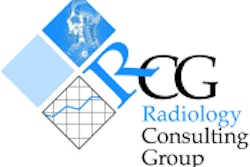CHICAGO - If a resident can be trusted to be on-call, that same resident may be qualified to teach courses to radiologic technology students, according to researchers from Indiana University in Indianapolis. Based on a post-class survey, RT students might just prefer it that way.
Dr. Richard Gunderman made his pitch for replacing radiology faculty with residents for RT training during a health services, research, and policy session at the RSNA Wednesday.
“We face some significant challenges in radiologic education. We don’t have enough technologists and we don’t have a good system in place to meet the demand for technologists in the next few years. Our faculty has less and less time to teach to RT students. As everyone knows, there is a continuing shortage of academic radiologists of approximately 600 in the United States,” Gunderman said.
For this assessment, residents taught a required radiologic pathology course to 30 RT students. These students were in the second year of the RT program. Generally, they receive 23 hours of instruction by six members of the radiology faculty, “none of whom were particularly enamored of the idea of continuing to teach this course,” Gunderman said.
The 16 residents had $25 added to their book allowance for teaching a course. They also were given 90-minute courses in effective didactics, as well as technical support for the visual aids. After the lectures, the students, faculty, and residents then filled out evaluation forms.
According to the results, 89% of the RT students strongly agreed or agreed that the course was taught well by faculty members. That approval rating jumped to 96% for residents. A higher level of enthusiasm and better preparation on the part of the radiology residents were two of the reasons they outranked the faculty, Gunderman reported.
“I don’t think this means the residents are inherently better teachers than our faculty,” he said. “It may simply mean that the residents are fresher and have a clearer understanding of what the technologists know.”
In particular, the RT students said the residents were better at tailoring the class to the students’ level of understanding.
There was more good news: Having residents teach the class reduced the direct cost by 76%, Gunderman said. For 23 hours of instruction in the classroom, it costs the university $3,749 in faculty fees. That cost dropped to $1,012 when the residents taught the classes.
The residents reported that it took them 8.2 hours to prepare the lectures and 2 hours to put together the visual aids. They also said that teaching the courses helped them learn the material better, provided valuable teaching experience, and encouraged bonding between the future RTs and doctors.
Audience members questioned whether the residents’ success was due to the fact that they were better prepared for teaching than the faculty was. Gunderman acknowledged that faculty development is an area that is lacking at his institution.
Gunderman also agreed with another audience member that an objective assessment of how the RTs did in the class would be worthwhile. Anecdotally, Gunderman reported that the students maintained the same scores as they had when taught by faculty and did not show any marked improvement or decline.
In the future, the plan is to expand this program to other groups such as nurses, medical students, practicing technologists, and junior residents.
“We think this will enable us to transform residents from passive recipients of instruction to active educators in their own right,” Gunderman said.
Session moderator Dr. Ethan Halpern praised the program, but cautioned that residents should not be treated as “cheap labor.”
By Shalmali Pal
AuntMinnie.com staff writer
December 5, 2002
Copyright © 2002 AuntMinnie.com



















